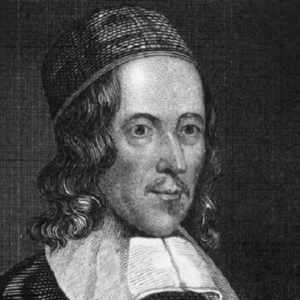George Herbert was a Welsh-born English poet, orator, and Anglican priest. He was well educated because he came from an affluent household. Herbert excelled in language and music during his undergraduate years. Initially, he aspired to be a distinguished priest, but his knowledge drew him to King James I/attention. VI’s Herbert gave up his secular ambitions in the 1630s to seek holy orders in the Church of England. He thereafter spent the rest of his life as the rector of Fugglestone St Peter with Bemerton St Andrew, a small parish near Salisbury. Herbert is also well-known for his unfailing devotion to his parishioners. He wrote religious poetry that was notable for its linguistic clarity, rhythmical flexibility, and clever use of imagery. “King of Glory, King of Peace” (Praise), “Let All the World in Every Corner Sing” (Antiphon), and “Teach me, my God and King” (Teaching) are some of Herbert’s most popular poems (The Elixir).
Childhood and Adolescence of George
Herbert was born in Montgomery, Wales, on April 3rd, 1593. He came from an affluent, well-known, and scholarly family. His family was also very supportive of the arts. Magdalen, his mother, was a supporter and friend of a number of writers, including John Donne. When George was three years old, his father, Richard Herbert, Lord of Cherbury, died.
Herbert had nine siblings, one of whom is Edward, later Lord Herbert of Cherbury and a significant poet and philosopher. Edward was sometimes referred to be the “Father of English Deism.” When Herbert was about 12 years old, he joined Westminster School as a day student. Later, he advanced to the rank of scholar, and in 1609, he was admitted to Trinity College, Cambridge, on the basis of a scholarship.
In 1613, Herbert graduated from the same college with a bachelor’s degree and then a master’s degree. He was recognized as a major fellow in his institution after getting honorary degrees from Westminster School and Trinity College, Cambridge. Herbert was appointed as a Reader in Rhetoric at Cambridge in 1618.
He was appointed to the position of an orator at Cambridge University in 1620. Until 1628, Herbert worked as an orator. In 1624, Herbert was elected to Parliament to represent Montgomeryshire.
Although everything seemed to be working in his favor, with respectful positions and James I’s love toward him, the deaths of King James I in 1625 and his two most powerful benefactors turned the tide against him.
However, Herbert’s service to the parliament is thought to have ended in 1624, given there are no records of his name in the 1625 Commons Journal.
Priesthood
Herbert was assigned to Bemerton, a rural parish in Wiltshire some 75 miles southwest of London, in 1630. Herbert preached and worked on poems at Bemerton. He also contributed his personal money to the church’s renovation. In 1633, he published “The Temple,” a collection of his poems.
The meaning of the words and their visible structure was used to create a sense of the architectural style of churches in this work. The topics of God and Love were explored by Herbert as both psychological and philosophical realities. After taking up religious obligations, he barely lived for three years.
It’s also said that as he lay dying, he handed over the manuscript of “The Temple” to Nicholas Ferrar, the founder of a semi-monastic Anglican religious community at Little Gidding, asking him to publish it if he thinks it might “turn to the advantage of any dejected poor soul” and to burn the manuscript otherwise.
George Herbert’s Works
“Easter Wings,” a pattern-based poem by Herbert, is one of his most popular pieces. The words in the work should not only be read but the structure should also be observed. To achieve the desired effect, the poem was printed sideways on two pages of the book, as if two birds were flying upwards.
In 1633, “The Temple” published a collection of his poems. Nicholas Ferrar edited a number of holy poems and personal ejaculations that were included in the book.
By 1690, there had been eight editions of the text. Barnabas Oley also edited Herbert’s Remains or Sundry Pieces of that Sweet Singer, Mr. George Herbert, in 1652, which included A Priest to the Temple, or the Country Parson, Jacula Prudentum, &c. The second edition, A Priest to the Temple or the Country Parson, was published in 1671.
All of Herbert’s surviving English writings are religious, and several of them are used as hymns. “The Altar” was one of his religious poems. In 1651, Herbert published “Jacula Prudentium,” a collection of pithy proverbs.
He also penned poems in Greek and Latin in addition to English. Many composers have expressed interest in setting his writings to music.
George Herbert’s Death
Herbert had been ill for a long time and died of tuberculosis on March 1, 1633.
George Herbert’s Commemorations
Every year on February 27th, the Anglican Communion remembers Herbert, as does the Evangelical Lutheran Church in America’s Calendar of Saints on March 1. In Westminster Abbey, he has a window dedicated to him, as well as a statue in niche 188 on the West Front of Salisbury Cathedral.
Estimated Net worth
George is one of the wealthiest poets and one of the most well-known. George Herbert’s net worth is estimated to be $1.5 million.


